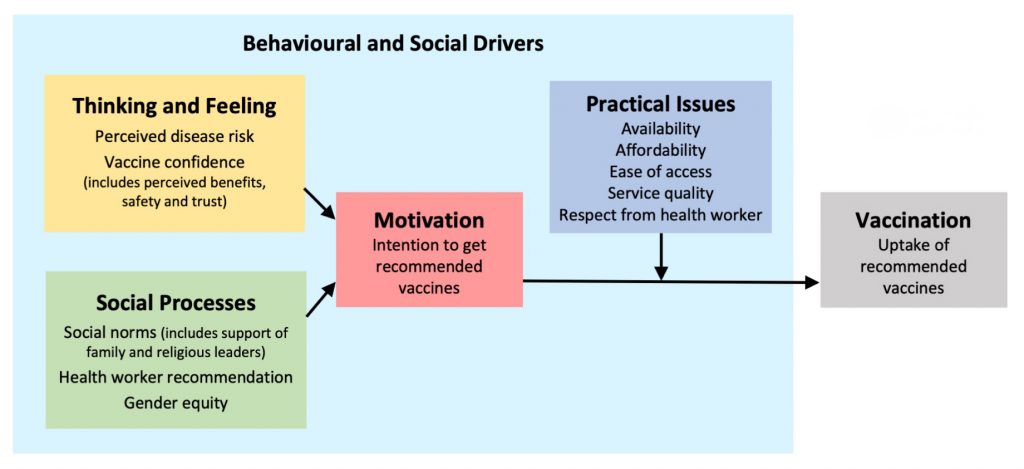Behavioural And Social Drivers Of Vaccine Uptake: Tools And Practical Guidance
A guidebook the supports the use of the BeSD of vaccination tools to understand what...
To increase and sustain vaccine coverage, it is vital to systematically understand why uptake is low or stagnating.
To understand the reasons for low uptake, WHO established the Behavioural and Social Drivers (BeSD) of Vaccination global working group in October 2018, which has also served as a workstream of the Demand Hub. The working group established a new framework for BeSD of vaccination with four domains: thinking and feeling, social processes, motivation and practical issues, including the experiences people have when trying to get vaccinated (Figure 1).
For gathering and using data on BeSD, the working group developed a package of new tools and guidance, including surveys and qualitative interview guides for both childhood vaccination and COVID-19 vaccination. Priority indicators are also identified, corresponding to 5 questions, for use as a minimum requirement.
Using the BeSD tools and guidance will enable programmes and partners to collect, analyze and use data on BeSD to understand reasons for low uptake and inform planning priorities, implementation and standardized monitoring and evaluation.

Source: The BeSD working group. Based on Brewer et al. Psychol Sci Public Interest. (2017).
The full range of outputs of the BeSD working group (evidence reviews and findings from the field testing and validation of tools) were presented to the WHO Strategic Advisory Group of Experts on immunization (SAGE) at its meeting in October 2021. In addition, SAGE’s recommendations on using the BeSD tools and data were published in a WHO Position Paper in May 2022.
SAGE recommended that countries regularly collect standardized data using BeSD validated surveys and priority indicators, focusing on districts and populations with coverage gaps and inequities. To complement this data, BeSD interview guides may be used for prioritized populations to ensure an in-depth understanding of beliefs and experiences.
A guidebook the supports the use of the BeSD of vaccination tools to understand what...
A WHO Position Paper that summarizes the development of new tools and indicators to assess...
To access additional resources, visit the Knowledge Base.
The next phase of this work will consist of supporting programmes and partners to use the BeSD tools to spur data-driven implementation. In addition, WHO and partners will be working to track and consolidate findings to understand trends. Further research will be planned to assess the potential need for added questions for specific sub-national settings.